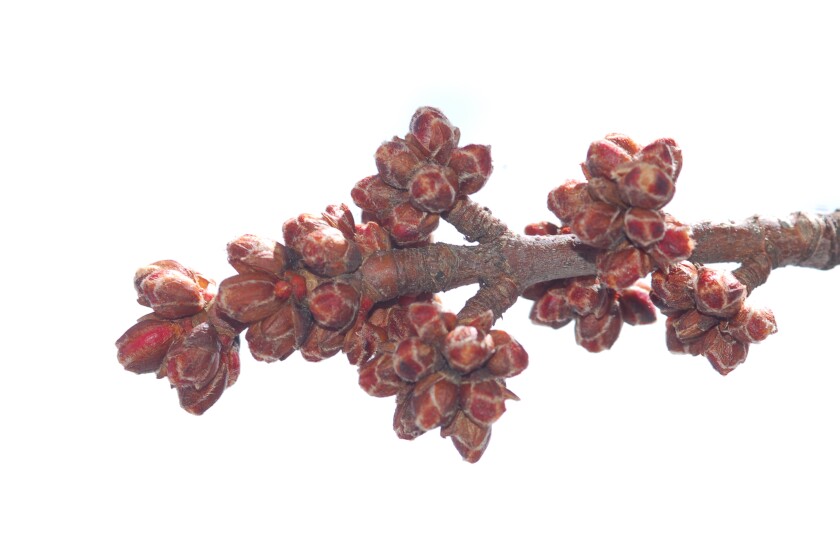As we approach the end of March, we may be looking for the first flowers. A few crocus and dandelions, both non-native, may have taken advantage of the longer days and warmer temperatures to bloom in sunlit sites. The woodland ephemerals that are so much appreciated and anticipated will appear in the forests after the snow melts. But there are some flowers starting to bloom now if we look to the trees.
The trees, large and robust plants that stood out in the weather for the entire winter now respond. As the new season begins and the amount of daylight each day exceeds that of darkness, they react. Like many other plants, trees produce seeds, often in fruits or berries. These products need to form from flowers that grow at an earlier time.
Flowers on trees are quite varied and often do not look like what we might expect to see on a flower. Later in the season, there are trees that hold flowers with fragrant petals, as in apple blossoms, but tree flowers at this time in early spring are quite different. The purpose of fragrant petals on a flower is to entice insects to visit and transfer the pollen that is produced on the male part of the flower (stamen) and carry it to the female part (pistil).
The trees of early spring also produce pollen that is transferred to the female part, but not by attracting insects. Being on branches in the wind, they take advantage of breezes and allow the pollen to drift — no need for colorful petals.
Many trees in early-season have flowers that are in long growths called catkins. These are seen on several common trees: willows, aspen, birch and alders. April is the month of catkins. But now in late March, there is one that opens its flowers without catkins: the silver maple.
ADVERTISEMENT
Maples are well-known in the region. We have five kinds of natives: sugar, red, silver, mountain and box elder and one non-native, Norway maple, all very common here. They grab our attention in fall with a dazzling display of colorful foliage, especially sugar and red maples.
For a couple months in early and late summer, we see their “helicopter” seeds (samaras) as they scatter from the trees. And for many, this early season is a time when we’ll note tapping to extract the sap for making syrup, again, sugar and red maples. But now is the time of the silver maples flowering.

Buds are in big clusters on this large tree, native to river floodplains, but being planted in many other sites along city streets, yards and parks. The buds are in groups opposite each other on branches. Out on the limbs all winter, they remain closed. But with longer days, they open in the early spring. The flowers that emerge from these reddish buds are either male (staminate) or female (pistilate). Occasionally, a tree may have both, but on separate branches. Trees are either male or female.
Staminate flowers look like light-colored threads reaching out from the buds in all directions. Pistillate flowers appear to be like reddish fingers stretching from the opened buds. With the longer days of spring, the pollen drifts from the staminate flowers to the pistillates. The result is pollination and eventually seeds. In early summer, we see these seeds, the samaras (“helicopters”) dropping and twirling from the trees.
But for now, in late March, these tree flowers of silver maples are a welcome sight of what is to come.




















